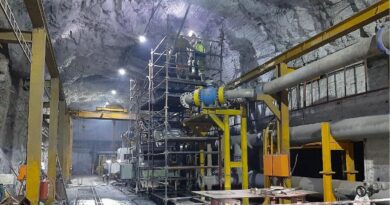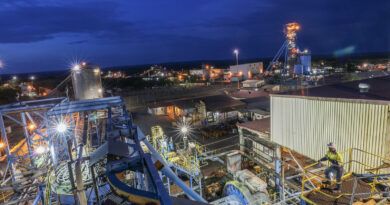First niobium mine in Africa receives green light
Globe Metals & Mining has been granted a Large-Scale Mining Licence for the Kanyika Niobium Project in Malawi. The Kanyika Niobium Project is positioned to be the first niobium mine in Africa and the first new producer in 50 years.
The Kanyika Niobium Project will produce niobium and tantalum products, which are key additives in high strength-low alloy (HSLA) steels and electronics. A JORC Mineral Resource Estimate indicates Kanyika could support a 20 year mine life.
Globe’s corporate head office in Perth, Australia is supported by regional operational offices in Lilongwe. Globe identified niobium and tantalum mineralisation in 2007 at Kanyika has been undertaking exploration and resource development activities since.
Drilling programs totalling 33.8 kilometres of percussion and core drilling have confirmed the extent of mineralisation. Structured and progressive engineering studies have resulted in the current (JORC 2012) resource statement and given rise to significant improvements and simplifications in the process flowsheet, from that first imagined.
In addition, Globe has undertaken substantial metallurgical optimisation work and commissioned a pilot plant to demonstrate and further optimise metallurgical processes. Metallurgical optimisations studies have improved recoveries from 62% in 2012 to 75% today, through simple novel patented metallurgical processes.
The Kanyika operations will produce a pyrochlore mineral concentrate that contains both niobium and tantalum in commercially valuable volumes to be shipped to a refinery for advanced processing into high purity materials.
MINING AND PROCESSING
The Malawi Kanyika operations involve a small-scale conventional drill and blast mining operation that mines and transports ore to a processing plant. On average the mine will produce 1.5 million tonne of ore per annum for feed to the process plant, and an additional 2 million tonne of waste rock that is hauled to waste rock dumps. At the processing plant, ore is crushed and then ground to less than 0.1mm for treatment to recover pyrochlore – a mineral containing niobium and tantalum. Through a series of simple magnetic separation and flotation stages, a pyrochlore mineral concentrate is produced grading about 40% niobium and 1% tantalum. This concentrate is filtered and packed for export.
REFINING
Refining involves the treatment of pyrochlore mineral concentrate with strong acids to liberate niobium and tantalum products. Solvent extraction recovers niobium as niobium pentoxide and tantalum as tantalum pentoxide – both grading better than 99% purity. The refinery could alternatively produce a tantalum salt (K2TaF7) used in the electronic industry, dependent on customer demand. This process technique was chosen as the refinery will be able to recover and sell both niobium and tantalum creating a value-added outcome. The alternative process route, smelting, would result in a niobium product with no credit for the content of tantalum and therefore does not result in the best commercial outcome for the project. The recovery and sale of tantalum products results in an additional 15% of revenue to the value of the mineral concentrate and refinery operations. This additional revenue is expected to almost cover the total operating cost of mining and refining operations.
PRODUCTION
The current optimised operational design results in the life-of-mine average production of 3,250 tonne per annum of niobium products and 120 tonne per annum of tantalum products. Some production is higher in the early stages of the operation due to high ore grades in the mining schedule.
PRODUCTS
The Company’s operations will produce both high purity niobium and tantalum pentoxide products. Based on customer specifications, these products can then be further refined to other high-purity high-value products.




